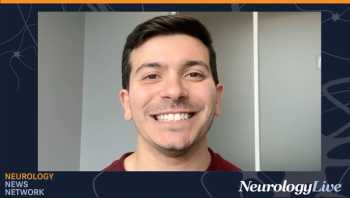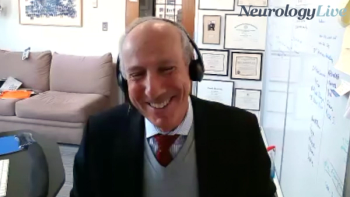
Discussing Dyskinesia Treatment Options With Patients With Parkinson Disease
Panelists discuss how treatment decisions for complex cases like the 66-year-old man with severe dyskinesia and 4 hours of daily OFF time require individualized approaches based on patient tolerance, with options including delayed-release/extended-release amantadine (starting at lower doses in older patients due to hallucination risk), extended-release carbidopa-levodopa formulations, infusion pumps for potential deep priming effects, or deep brain stimulation for patients seeking rapid improvement, emphasizing the importance of engaging patients in discussions about their patience for dose adjustments, risk tolerance for adverse effects, and desired timeline for symptom control to guide optimal treatment selection.
Episodes in this series

This segment explores advanced treatment options for the 54-year-old patient with Parkinson disease, particularly focusing on deep brain stimulation (DBS) as a viable consideration. Given her favorable clinical profile—9 years into disease progression, younger age, cognitive integrity, and absence of hallucinations, psychosis, or impulse control disorders—she represents an excellent candidate for DBS therapy. The discussion acknowledges recent innovations in adaptive programming for DBS systems, though the primary focus remains on pharmacological interventions. The patient's characteristics align perfectly with typical DBS candidacy criteria, making this an important treatment consideration alongside medication management.
Research analysis of delayed-release/extended-release amantadine phase 3 trials specifically examined patients meeting "5-2-1" DBS candidacy characteristics: 5 or more daily levodopa doses, at least 2 hours of OFF time, and at least 1 hour of troublesome dyskinesia. Results demonstrated robust efficacy with approximately 3 hours of increased good ON time, approaching the benefits typically achieved with DBS. This data suggests that delayed-release/extended-release amantadine could serve as an intermediate step before proceeding to DBS, particularly valuable for young, cognitively intact patients who might benefit from delaying surgical intervention while maintaining significant symptom improvement.
The potential role of infusion pumps in this patient population remains an area of active research interest. Both fast carbidopa-levodopa and apomorphine infusions may offer benefits through pharmacokinetic optimization and a theoretical "deep priming" effect. Deep priming represents the opposite mechanism of dyskinesia —although pulsatile stimulation contributes to dyskinesia formation, continuous dopaminergic stimulation through infusions might reset hypersensitive receptors to normal responsiveness. This continuous stimulation could reduce both peak-trough medication levels and provide long-term receptor normalization. However, these hypotheses require further clinical validation through dedicated research studies to establish definitive efficacy and optimal patient selection criteria.
Newsletter
Keep your finger on the pulse of neurology—subscribe to NeurologyLive for expert interviews, new data, and breakthrough treatment updates.




































